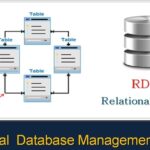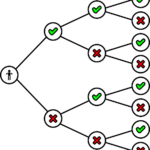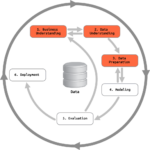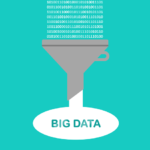Data Warehousing is a process of constructing a warehouse for reporting, data analysis, decision making and ad hoc queries. Moreover, it collects and manages data from different sources to provide insights in business. In addition, it uses hetrogeneous databases.

How Data Warehouse Works?
It creates a repository where data arrives from various sources. Certainly, data can be in following manner:
- Structured
- Semi- structured
- Unstructured
This process goes through transformation and then users can access this data in the DW through Business Intelligence tools, SQL clients etc.
Types of Data Warehouse
Firstly, let us look at types of DW:
- Enterprise Data Warehouse
- Operational Data Store
- Data Mart
First is EDW which provides decision support service across the enterprise. Moreover, it offers unified approach for representing and organizing data. It also provides ability to classify it according to given subject.
Second is ODS which refreshes in real time. It can be used for daily activities like storing and managing records for employees in organization.
Third is data mart which is a subset of DW. Moreover, it is for a specific line of business like sales, finance.
Hetrogeneous Databases Approach
- Query driven approach
- Update driven approach
Firstly, in query driven approach, it builds wrappers and integrators on top of multiple hetrogeneous databases. Moreover, client side issues the query and meta data dictionary converts the query into appropriate form.
In update driven approach, information is integrated in advance and then stores it into hetrogeneous databases. This approach is more efficient comparatively. Moreover, it provides high performance.
Functions of DW
- Data Extraction
- Data Cleaning
- Transformation
- Loading
Firstly, in data extraction, it involves gathering of data from multiple hetrogeneous databases.
Secondly, data cleaning involves replacing missing values, removing noisy data and unwanted values.
Thirdly, data transformation involves converting data from legacy format to warehouse format.
Lastly, data loading involves sorting and summarizing the data and building partitions.
Applications of Data Warehouse
- Banking sector
- Healthcare
- Airlines
- Telecommunications
- Public sector
- Investments and insurance sector
Firstly, in banking sector it is used for market research and performance analysis of services and products.
Secondly, in healthcare industry it strategies reports and generate patient’s diagnosis report.
Moreover, we use DW to maintain policy records, tax records, finding customer trends and customer buying patterns.
Summary
In conclusion, we have learnt that data warehousing is a process of constructing a warehouse for reporting, data analysis, decision making and ad hoc queries. Moreover, it goes through cleaning and transformation and then users can access this data in the DW through Business Intelligence tools
We have also seen the types of DW i.e EDS, ODS and data mart. Lastly, we saw some major applications of DW in banking sector, healthcare, airlines etc.

























